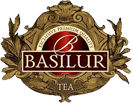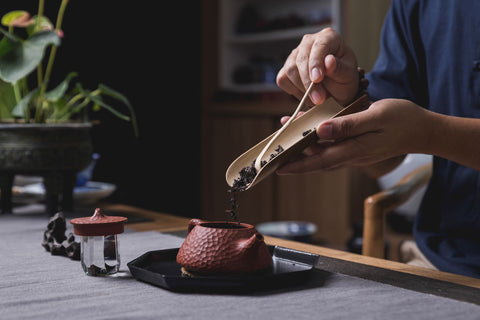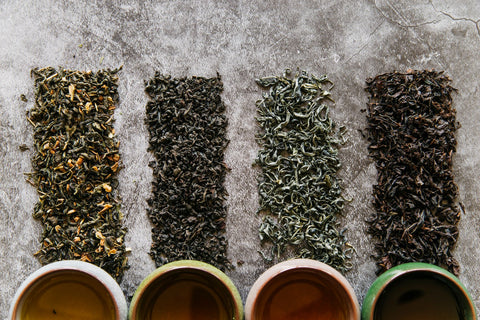How it all began!

Having just celebrated Chinese New Year, we felt that this was a great time to discuss the rich history that China has with tea! In Chinese history there is reference to tea as far back as 5000 years. While the origin of tea drinking is not really known, by most accounts the beginnings of the tea culture in China began around 2737 B.C. According to folklore the second Emperor of China, Shen Nung who studied plants and herbs was in the court yard when the leaf of the Camellia Senensis blossom dropped into his boiling pot of water. At this time, tea was mainly considered as a refreshment.
By the Zhou Dynasty (1046-256 BC), the function of tea to refresh the body and clear the mind had gradually replaced its function as medicine. People started drying the leaves to preserve tea. When they made tea, they put the leaves into a pot and made a kind of thick soup. The princes of the Zhou Dynasty were used to this thick soup, but due to its bitterness, it did not become widely popular. In the Han Dynasties (206 BC- AD 220), both the collecting and processing of wild tea leaves were improved. Tea became a tasty drink and was very popular amongst the nobility. In the Wei Period (220-265) and Jin Dynasties (265-420), tea came to be the drink of banquets and lubricated philosophical and metaphysical discussions. Tea’s “freshness and purity” came to be preferred to the “violence and intoxication” of wine.
However, interestingly for centuries Chinese people were not fond of black tea. Although it is well-known that tea plants are native to China, black tea tends to be seen as a foreign import. This is perhaps best illustrated by the fact that China, a nation that has been drinking tea for more than 2,000 years, only came up with a Chinese term for “black tea” (hongcha) less than 200 years ago. While in English we say “black tea,” the corresponding term in Chinese literally means “red tea.”
The types of Chinese tea

There are six main types of tea that originate from China; green tea, black tea, oolong tea, dark tea and white tea, distinguished mainly by different methods of production. Folklore relates each type of tea to certain human characteristics. Thus it is said that green tea, simple and light, stands for scholasticism of south China; black tea, mild and reserved, is regarded as rather ladylike; Oolong tea, warm and persistent, resembles perseverance of philosophers, dark tea, with its lingering aftertaste, symbolizes the wisdom of the elderly, and so on and so forth.

Although tea drinking ceremonies flourish in Japan, they actually originated from China. The process of making tea, smelling tea and appreciating tea, is fused with the philosophies of Taoism, Confucian and Buddhism, which encourages people to explore their spiritual world and offering refreshments. Furthermore, different areas of China developed their own unique customs of taking tea. In Guangdong, for example, people like drinking morning tea, in Fujian they prefer Kongfu tea, Hunan has Lei tea, Sichuan people love “covered-bowl tea”, while people of the Bai nationality treat their guests with “Three-Course Tea”. Tibetan people prefer buttered tea and those from Inner Mongolia like milk tea. These various tea customs constitute the rich and profound Chinese tea culture.
Tea has remained an integral part of Chinese culture for thousands of years; it was popular before the Egyptians built the great pyramids, and was traded with Asian countries even before Europe left the dark ages. The importance and popularity of tea in China continues in the modern day and has become a symbol of the country's history, religion, and culture. Basilur has paid homage to this tradition and culture through products like Tea Legends - Celestial Empire and our special Chinese Milk Oolong!




Comments (0)
There are no comments for this article. Be the first one to leave a message!